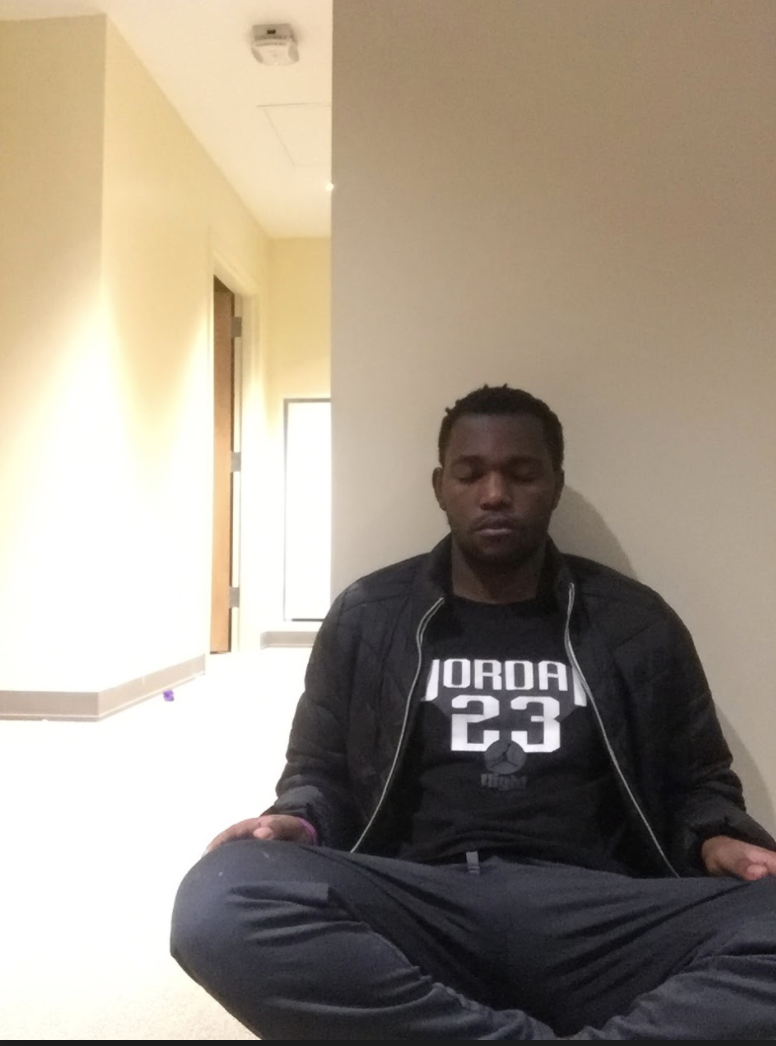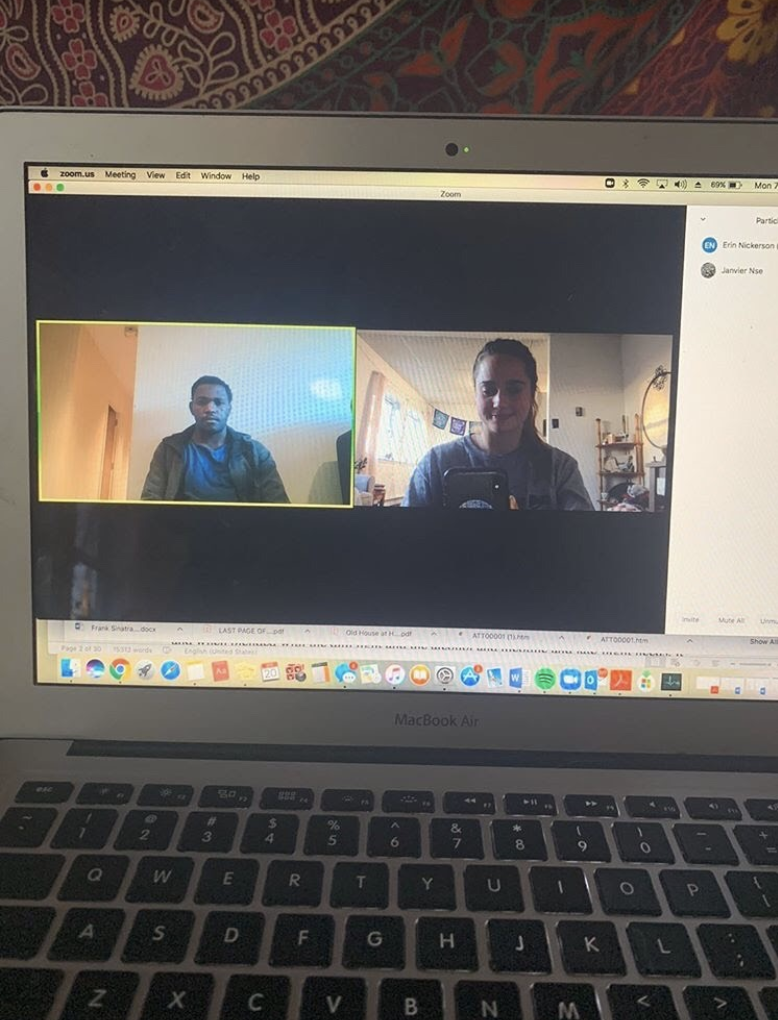
By Janvier Nsengiyumva
Opinion Editor
I am a relatively relaxed fellow in life, taking time to read and write poetry and listen to music between my studies. But this pandemic has me on edge, like it does a lot of my friends. So I decided to try something new. I asked myself, could meditation do what everyone says it can?
What can you turn to when you’re anxious, depressed and bored with lack of motivation? It’s difficult to be in the moment when your mind is in a state of panic, absorbed by worries and grief. So I wanted to think about the silver lining. We are in a position to turn inward and reflect on ourselves. I have never done meditation and yoga. I asked my friend Erin Nickerson, a yoga instructor who has experience practicing meditation, to virtually walk me through the steps. Erin and I met on Facetime and discussed how to deal with anxiety. She told me how doing meditation has liberated her from stress in the past.

In talking to her I learned that practicing routines like breathing and consciously moving allows emotions to move. “Whatever those emotions are, being in your body and moving and practicing yoga allows those emotions to flow through the body,” Nickerson said. “There are so many tools like breath work [that] can really relax that nervous system and bring you down to the present moment. It can really be nurturing for the nervous system.”
Our first session was about 10 minutes. While talking on Zoom, Nickerson asked me to find a comfortable place to sit. I chose to sit against a wall. She had me close my eyes and relax. We began by practicing muscle breathing. Breathe in through the nose, out through the mouth. I was stressed out and anxious from all the external emotions. Simultaneously, there was a sense of uneasiness, my heart was racing as a result of the anxiety of being alone on campus and lack of moving. Thus, emotionally, I needed to breathe and release the tensions I carried. We practiced holding breath and letting it out. Also we did alternate nostril breathing where you use your thumb to close your right nostril, inhale through your left nostril. I did feel the effect of these forms of meditation; they lowered my anxiety and decreased my heart rate.
What made this first experience more helpful was practicing with somebody who not only guides you but becomes a human presence that relieves your loneliness and anxiety.

Our second session was about 15 minutes and we did breath awareness and body movement. Erin guided me to observe the rhythm of my breathing like slowly watching my breath and focusing on how my chest and belly felt, and allowing myself to feel grounded. Being in the moment means not thinking about negative experiences and getting out of your mind.
We continued with yoga which we started with standing arms swings. To do this I had to relax my arms while swinging side to side. Another yoga stretch was repeatedly taking my arms to the side and sweeping them up while inhaling and exhaling as my arms slowly glided back down to my sides. After we finished, I could feel my body relaxed, there was no tension or nervousness, and my mind was clear because all the thoughts and fear were reduced. I think focusing my attention on my arms while breathing stopped the cycle of self-rumination which is one of my problems.
Thinking about doing meditation alone? Follow these four tips.
Use resources. There are many ways to find resources on how to meditate alone. For example, these resources can be found on youtube. Bergeon wellness center can also offer these resources, there are online yoga classes for students until July 1.
Seek guidance. If you’re new to meditation it would be helpful to have some kind of guidance. “Having guidance and a network of support would be very beneficial especially during these times,” said Nickerson, who herself offers monthly memberships. (http://goodvibetribe.teachable.com?affcode=157895_f1c72ue3)
Commit to sit. For people who want to practice completely alone, commitment is important. “Even one to five minutes a day of setting time to sit by yourself is helpful”, Nickerson said. Finding a comfortable area in which to sit is especially beneficial.
“Bring items that are meaningful to you to place in this one designated area,” Nickerson said. “Come to this area everyday even if it’s just one minute, and sit, closing eyes and just check in with yourself. It’s a practice of self-inquiry, checking in with yourself physically. How do you feel? Do you have tensions in the body? Are your thoughts running like crazy? Am I sad today? Am I really tired today? Do I feel awesome today? Just a quick scan for a minute even.”
Experiment. Journaling, singing, and dancing are all forms of meditation, Nickerson said, describing them as a flow state where you connect with the present moment in your body.

